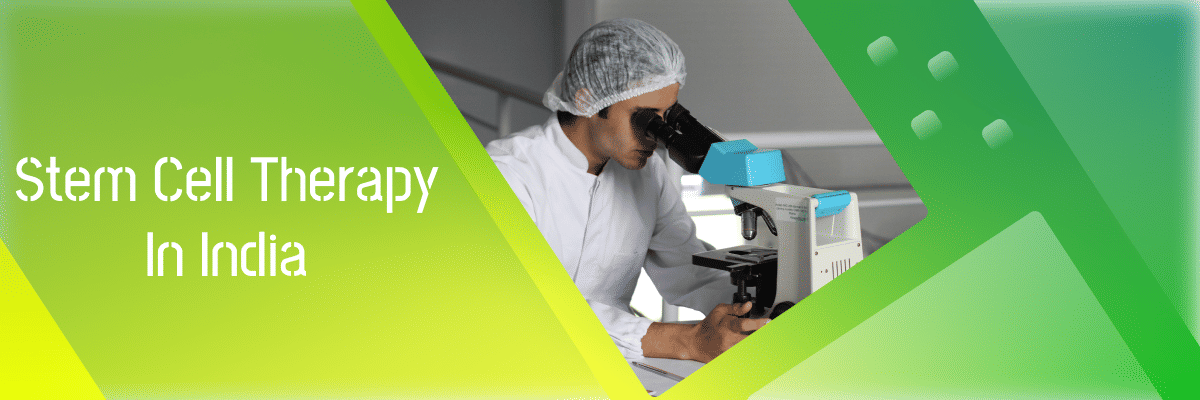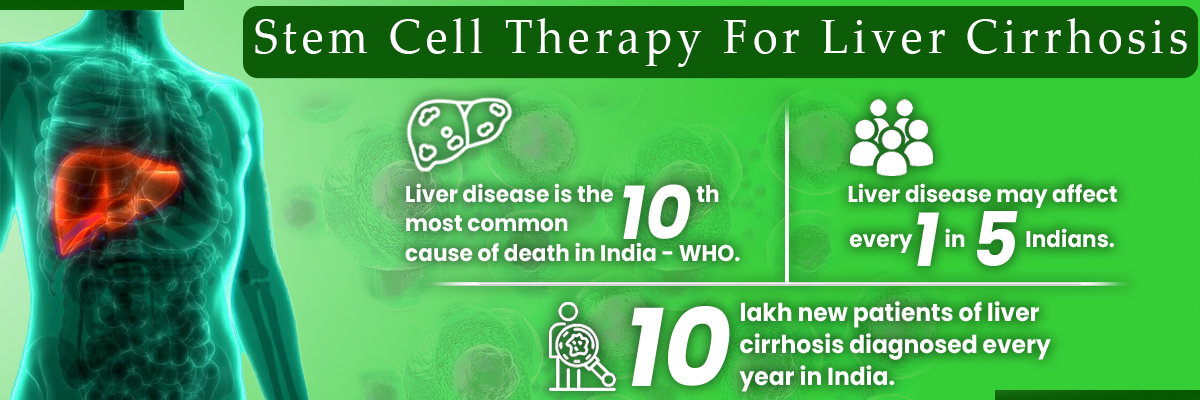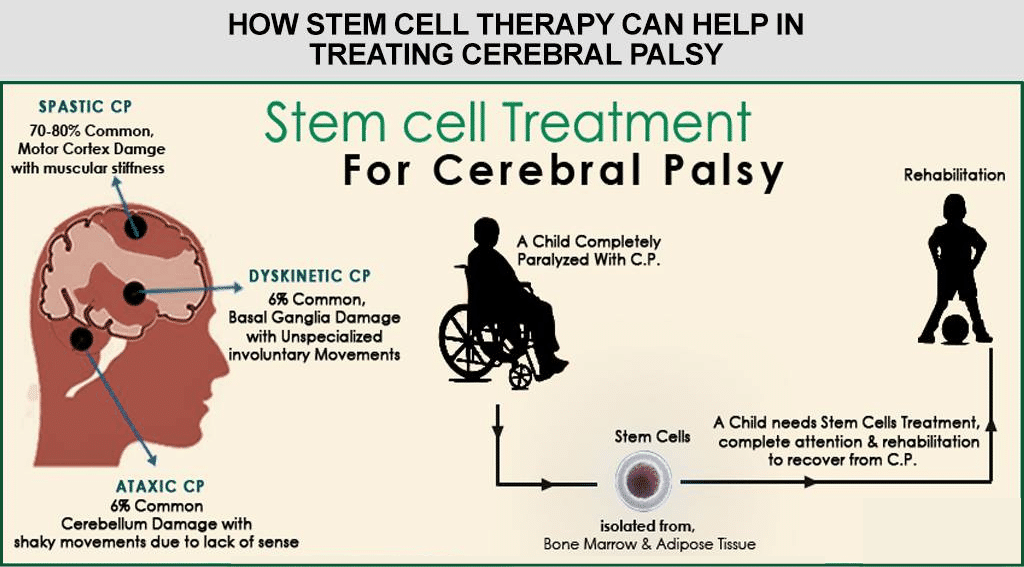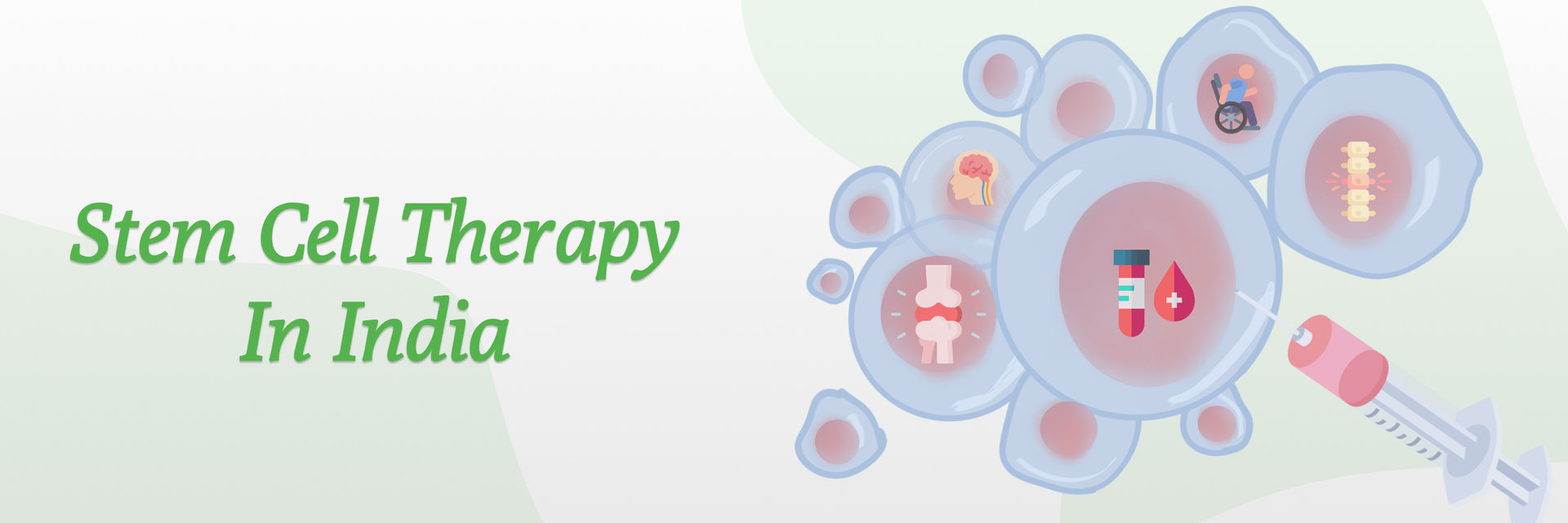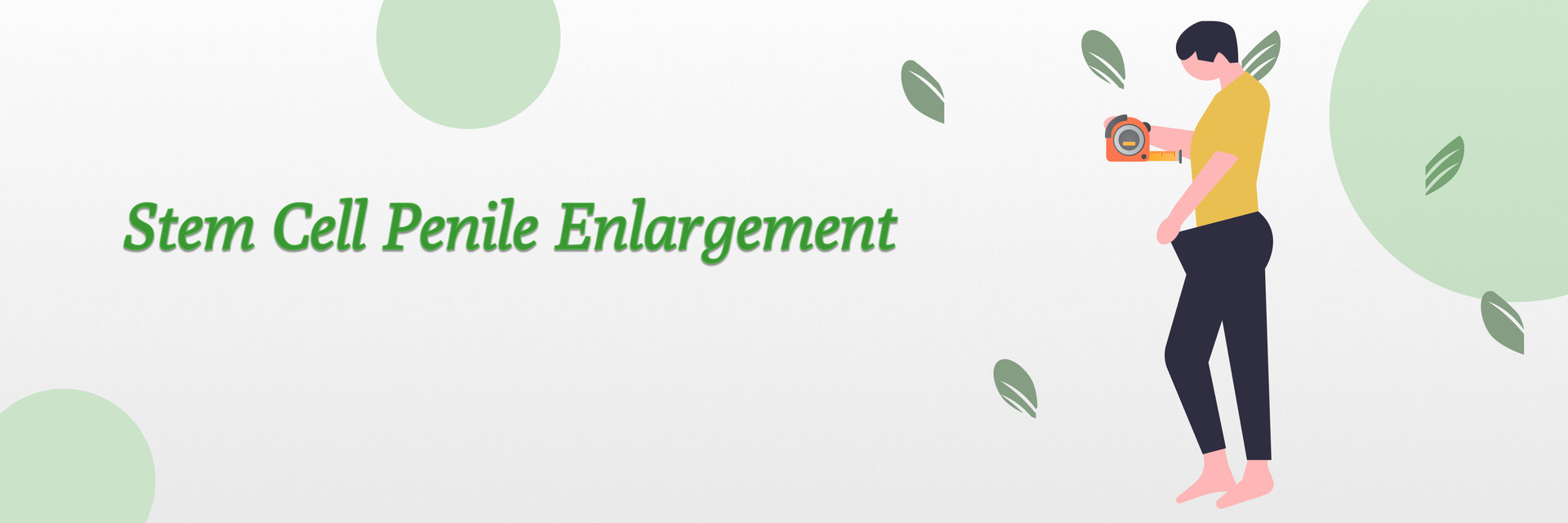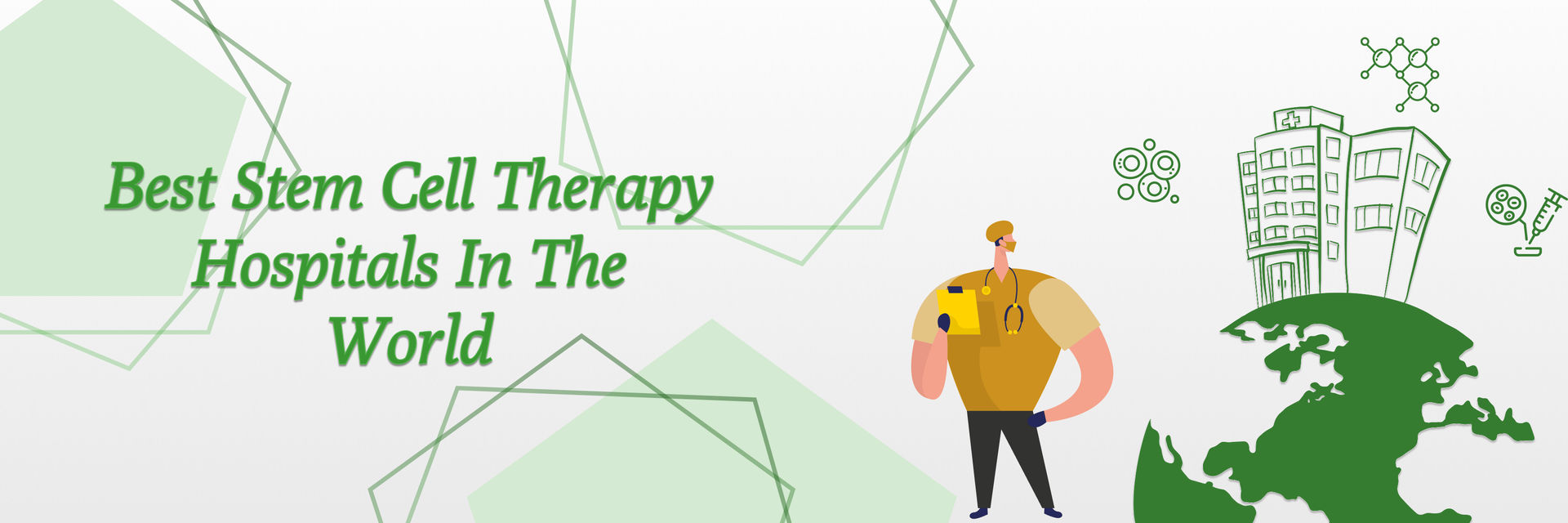Overview—Female Infertility
Infertility is a growing concern in India, affecting millions of couples who desire to have children. According to recent studies, approximately 10–15% of Indian couples face infertility issues. This prevalence underscores the need for advanced treatments and innovative solutions to address female infertility, one of which is stem cell therapy.
Stem cell treatment for female infertility, a promising field in regenerative medicine, has shown potential for treating various medical conditions. With advancements in research and technology, stem cell therapy is emerging as a beacon of hope for many women struggling with infertility. This blog explores the intricacies of stem cell treatment for female infertility, its effectiveness, success rates, and the associated costs.
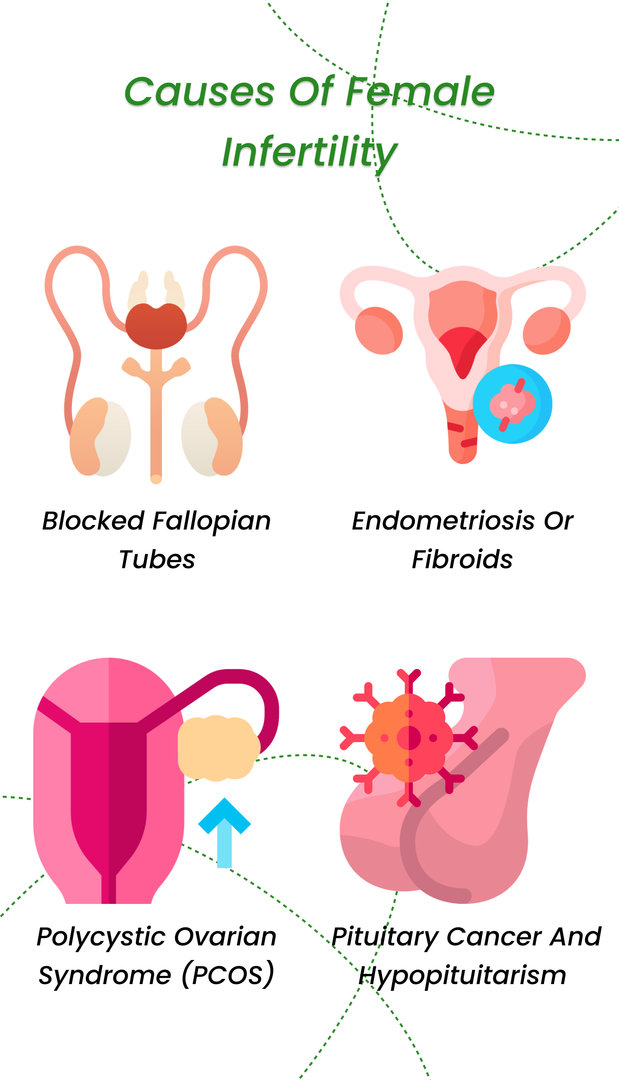
Don't let female infertility go unexplored – prioritize your health and schedule your fertility consultation today with the best fertility Specialists in India.
There are several options to treat female infertility and fulfil your dream of getting to live the beautiful phase of motherhood.
This must have made you excited to learn about them, right?
So, here you go!
Understanding Stem Cell Therapy
Stem cells are undifferentiated cells capable of transforming into specialized cell types. They can replicate and repair damaged tissues, making them invaluable in medical treatments.
Stem cell therapy involves harvesting stem cells from the patient's body or a donor, processing them, and injecting them into the affected area to promote healing and regeneration. In the context of infertility, stem cells are typically used to rejuvenate or repair ovarian tissues, improve egg quality, and enhance overall reproductive health.
Is Stem Cell Treatment for Female Infertility FDA Approved?
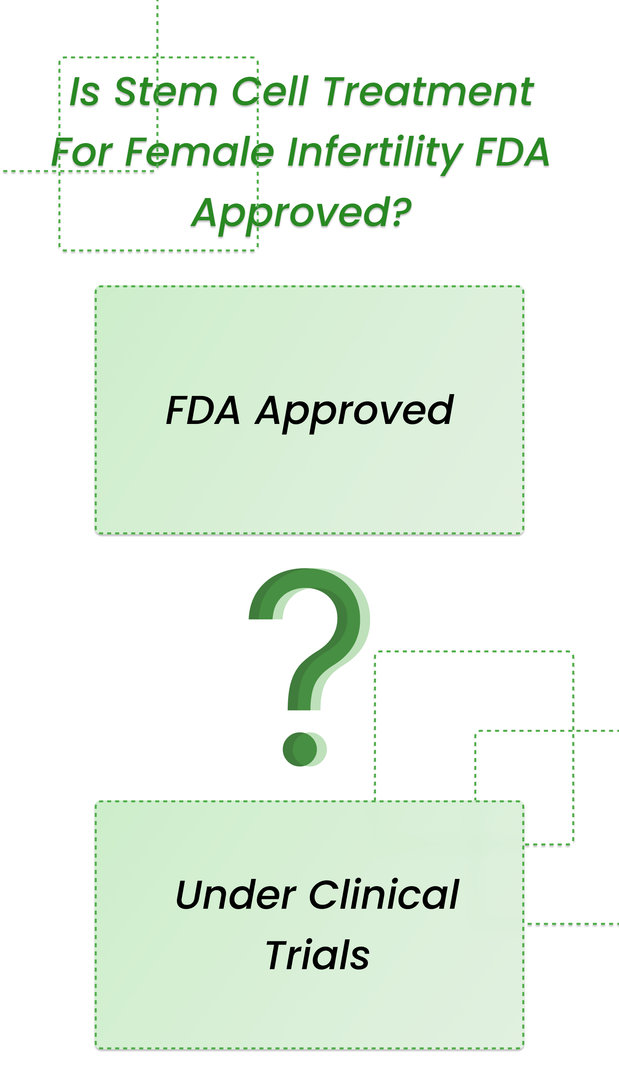
Stem cell treatment for female infertility is still undergoing clinical trials and is not FDA-approved. However, all the trials have shown promising results in reversing female infertility.
A research paper by Sarama Saha, Partha Roy, Cynthia Corbitt, and Sham S. Kakar, published in July 2021, explains the scope and future of stem cell treatments for female infertility in further detail.
First, the researchers examined the various types of stem cells. They also investigated several other therapies that treat female infertility.
They concluded that although embryonic stem cells have shown good potential, they are shrouded in several ethical issues.
Mesenchymal stem cells derived from the bone marrow are the next best option.
They also stated that stem cell therapy “brings a ray of hope” to people for whom Assisted Reproductive Technology (ART) has failed. Although much science remains undiscovered in this field, the potential is immense.
They also stated that stem cell treatment can resolve genetic issues economically and is less invasive, which most couples prefer.
Regulatory Status in India
In India, stem cell therapy is regulated by the Indian Council of Medical Research (ICMR). The ICMR has issued guidelines for stem cell research and therapy, emphasizing the need for rigorous clinical trials and ethical practices. While stem cell therapy for infertility is available in some clinics, patients need to verify the credentials of the clinic and ensure that the treatment follows ICMR guidelines.
You must be wondering where I can find stem cell therapy for infertility in India.
Here you can check the hospitals for stem cell therapy in India.
However, while deciding on the facility where you will receive treatment, it is necessary to verify their credentials and thoroughly research their protocols.
Does Stem Cell Treatment Work for Female Infertility?
Stem cell treatment has shown several benefits in treating female infertility. While the treatment is still in its initial stages, it has shown a positive impact in helping women conceive.
Yes, you read that right!
But now you must be wondering, how does it work?
Stem cells have numerous functions that can help treat a wide variety of diseases. The five properties listed below specifically help in treating female infertility:
- They can replace and repair dead and damaged cells. Additionally, they have a ‘self-homing property,’ which means they can locate the damaged cells without direction.
- They activate dormant and suppressed cells, kickstarting cell division. This helps increase the number of new cells in the body.
- Stem cells secrete various enzymes, cytokines, and proteins, which promote cell proliferation and inhibit the death of functional cells.
- Stem cells have an immunosuppressive function toward the natural killer cells of our bodies, enabling the cells to live longer.
- They promote the recovery of inter-cellular signalling, thus enhancing cellular functions.
Eligibility
Is every patient suffering from female infertility eligible to undergo stem cell treatment?
Not yet.
All clinical trials have a strict set of requirements that are tailored to their studies. Some of the common ones are:
- Women should be of fertile age (between 25 and 40 years)
- The patient should have a previous history of uterine ruptures, D&C for missed abortion, or an incomplete abortion.
- There should be no structural abnormalities in the reproductive system.
- There should be no previous history of myomectomy or polypectomy.
- There should be no history of malignancies.
Potential Benefits of Stem Cell Therapy
Like every medical treatment, stem cell treatment also has its pros and cons
- Personalised Treatment: Stem cell therapy can be tailored to the individual, offering a personalized approach to infertility treatment. Using a patient's cells minimizes the risk of immune rejection, increasing the chances of success.
- Regenerative Potential: Unlike traditional treatments, which often focus on managing symptoms, stem cell therapy aims to regenerate and restore normal function. This could lead to long-term solutions rather than temporary fixes.
- Lower Risk of Multiple Pregnancies: Conventional infertility treatments often result in multiple pregnancies, which can pose health risks to both the mother and babies. Stem cell therapy may reduce this risk by improving the natural fertility process.
Challenges and Ethical Considerations
- Safety Concerns: While stem cell therapy holds great promise for infertility treatment, it is still in the experimental stages. Extensive clinical trials are needed to evaluate its long-term safety and efficacy thoroughly.
- Ethical Issues: The use of embryonic stem cells raises ethical concerns related to the destruction of embryos. This has led to a preference for adult stem cells and iPSCs, which do not involve ethical dilemmas.
- Cost and Accessibility: Stem cell treatments are costly and may not be accessible to all patients. For instance, stem cell treatment for female infertility cost in India can be quite expensive, similar to other stem cell therapies. However, as research progresses and these therapies become more widespread, costs are anticipated to decrease, making them more accessible over time.
Stem Cell Treatment For Female Infertility Cost
What is the cost of the treatment? you surely might have this question running in your mind, right?
Indeed, this is the most crucial and obvious question that everyone has!
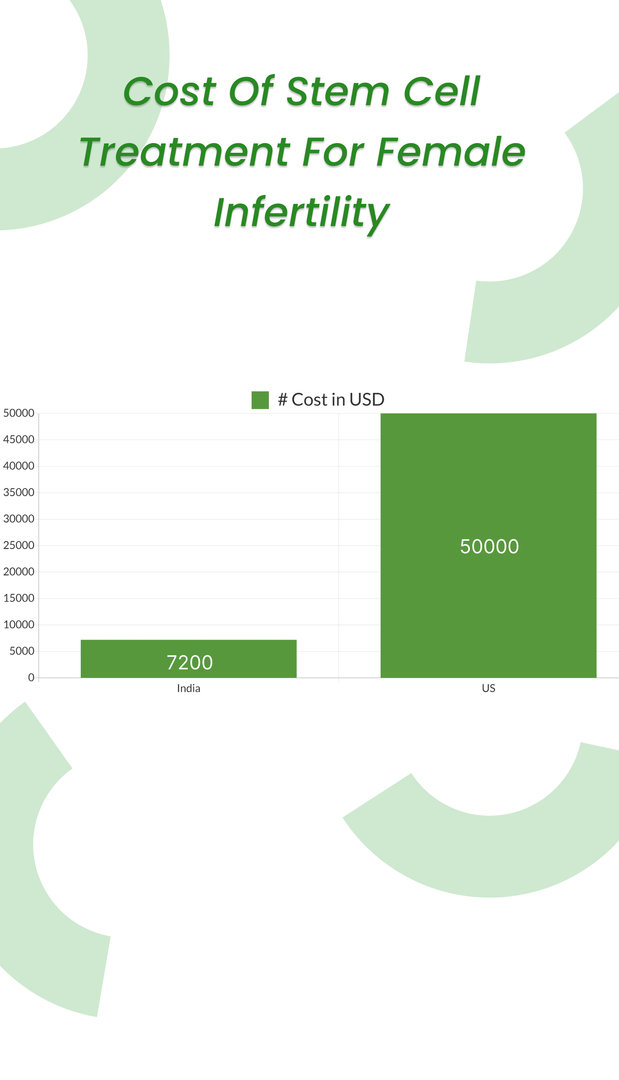
Well, the cost of stem cell treatment for female infertility depends on several factors like the severity of the issues causing infertility, the number of cycles required, and the type of stem cells used.
The facility and city you choose for your treatment also weigh into the total cost.
- India: The average cost ranges from $6,000 to $12,000 per cycle. Each cycle can cost around $2,000, and multiple cycles may be needed.
- United States: The cost can be much higher, ranging from $15,000 to $30,000 per cycle, depending on the clinic and procedure involved.
- Other Countries: In Europe, the cost may range from €20,000 to €35,000 depending on the country and the type of clinic offering the treatment.
These costs typically cover stem cell extraction, processing, and the transplantation procedure, but additional fees for follow-up care or other services may apply.
Navigate the cost of stem cell treatment for female infertility wisely. Take the first step to recovery – get in touch with us for personalized treatment options tailored to your needs.
Procedure
Are you wondering just what the procedure for this treatment is?
We have brought all the details for you.
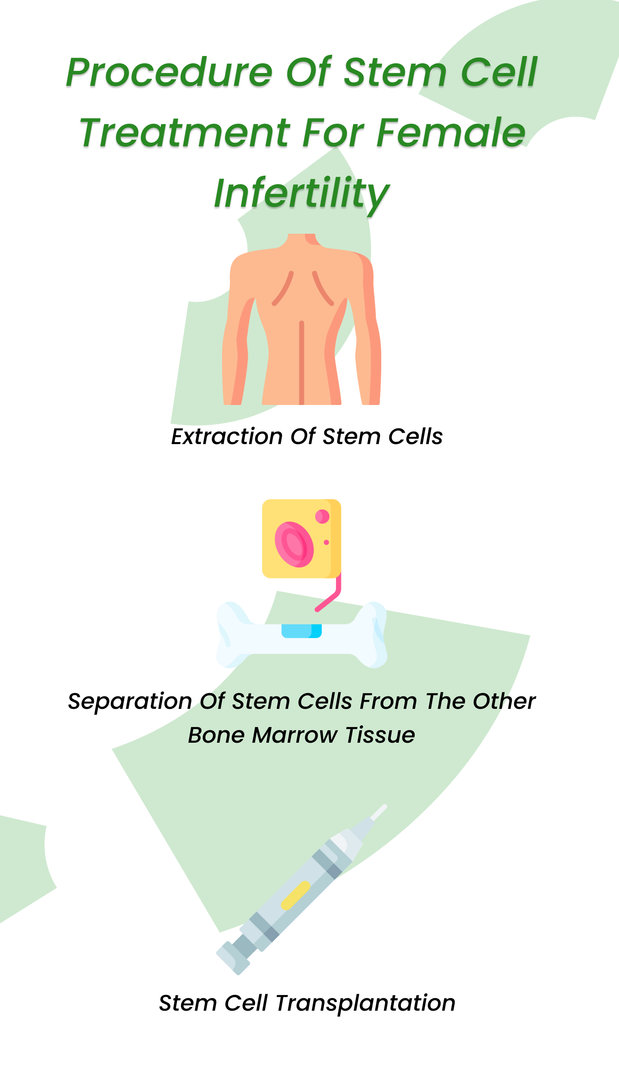
| Procedure | Description |
| Step 1: Extraction of Stem Cells |
|
| Step 2: Separation of stem cells from the other bone marrow tissue |
|
| Step 3: Stem Cell Transplant |
|
While the whole procedure can be done in one day, splitting it over two or three days is preferable to keep the patient comfortable. After keeping the patient under observation for a few hours to one day, they are given a discharge.
What to Expect After Stem Cell Treatment for Female Infertility?
Immediately after undergoing a cycle of stem cell treatment, the patient might feel some nausea or dizziness. This only lasts for a few hours and resolves itself.
You will be advised to avoid strenuous physical activity for the next week, although you can return to your daily routine after one or two days.
What about side effects, you ask?
You will be happy to know that no long-term side effects have been reported by any clinical trial so far. Stem cell treatment is completely safe.
When will you start seeing results?
This is a tricky question with no single answer.
It varies from person to person and depends on several factors like how advanced the infertility is, and the age of the patient, among other things.
Several American studies have reported that after the injection of stem cells, the size of the ovary increases, and the estrogen level doubles for up to one year after the procedure.
Within three to four weeks of stem cell treatments, you will start seeing initial improvements, such as regularising the menstrual cycle and ovulation.
The results last for up to twelve months after the treatment.
What is the success rate of stem cell therapy for ovaries?
Stem cell therapy for ovarian function is still experimental, so exact success rates vary. However, some small studies report that the therapy helps improve ovarian function, leading to pregnancy in a few cases, particularly for women with premature ovarian failure.
Key Statistics:
- Stanford University Study (2023): This study reported that 70% of women with premature ovarian failure experienced restored hormone levels and resumed ovulation following autologous stem cell therapy.
- University of Edinburgh Research (2022): The creation of artificial ovaries using stem cells showed a success rate of over 60% in supporting egg development and hormone production in preclinical trials.
- Premature Ovarian Failure (POF): In small studies, stem cell therapy has shown a 20-40% improvement in ovarian function in women with POF.
- Hormonal Improvements: Around 50-60% of women treated with stem cells showed improvements in estrogen levels, which is crucial for fertility.
- Pregnancy Rates: Though still under research, initial trials have reported a 10-20% pregnancy rate in some women after stem cell treatment.
These statistics will likely evolve as more studies are conducted.
Factors Affecting Success Rates:
- Age of the Patient: Younger women tend to have better outcomes.
- Underlying Condition: Conditions like premature ovarian failure respond better than age-related infertility.
- Stem Cell Source: Bone marrow-derived stem cells may be more effective than other sources.
- Overall Health: General health and lifestyle factors also play a role in the success of the therapy.
Can You Get Pregnant After Stem Cell Transplant?
Yes, there have been documented cases where women have successfully conceived after undergoing stem cell transplants.
However, these instances remain relatively few, and the procedure remains experimental.
Examples:
- Ovarian Function Restoration: Women with diminished ovarian reserve (DOR) or premature ovarian failure (POF) who received stem cell therapy have reported successful pregnancies. For example, a recent study published in the Journal of Clinical Investigation in 2024 demonstrated that mesenchymal stem cell therapy led to successful pregnancies in women with DOR.
- Endometrial Regeneration: Clinical trials (2023) at Yale University showed that women who underwent bone marrow-derived stem cell therapy for endometrial regeneration had a 50% higher pregnancy rate.
Stem Cell Therapy vs IVF
According to the US National Library of Medicine, in vitro fertilization is the fertilization of an egg by the sperm outside the body. It is currently one of the most successful tools in the ART arsenal and is the treatment of choice in most female infertility cases.
Are you confused about whether you should go for IVF treatment or stem cell therapy?
Don’t worry!
We have made a comparison table to help you better understand the difference between these two treatments.
| Stem Cell Therapy | IVF |
| Use of stem cells to regenerate or repair reproductive tissues. | Use of stem cells to regenerate or repair reproductive tissues. |
| It involves the formation of more eggs in the human body. | It involves the extraction of eggs from the ovary. |
| The treatment helps in achieving natural conception. | It is an artificial method of conception done outside the body. |
| Not FDA approved; considered experimental. | FDA approved and widely practiced. |
| Generally, insurance is not covered due to experimental status. | Often partially covered by insurance. |
| Minimally invasive (stem cell harvesting and injection). | Moderately invasive (egg retrieval and embryo implantation). |
| Regulated by ICMR, clinical trials and ethical practices are required. | Widely regulated and practiced with established guidelines. |
| Suitable for women with ovarian failure or poor egg quality. | Suitable for a wide range of infertility issues, including blocked fallopian tubes, male infertility, etc. |
| $5,000 - $20,000 per treatment cycle. | $12,000 - $15,000 per cycle. |
Another emerging treatment is stem cell IVF. It combines both these treatments, giving significantly more effective results.
The stem cells aid in improving the health of the uterus, reducing the chances of a miscarriage. However, this treatment is still very early and will require several more trials before it can become a part of mainstream medicine.
Explore your reproductive options: Stem Cell Therapy vs. IVF. Your well-being is our priority – call us to book your appointment today and make informed decisions about your fertility journey.
Future of Stem Cell Research in Treating Female Infertility
The future of stem cell research in treating female infertility is promising and evolving quickly. Here’s a concise summary:
- Advanced Stem Cell Types: Research on induced pluripotent stem cells (iPSCs) and mesenchymal stem cells (MSCs) is showing potential for improving ovarian function and fertility.
- Artificial Ovaries: In the future, stem cells could be used to create artificial ovaries, helping restore ovarian function and egg development for women facing infertility due to aging or medical conditions.
- Higher Success Rates: As clinical trials progress, success rates are expected to improve. More research will lead to better treatment methods and outcomes, making stem cell therapy a viable alternative to IVF.
- Personalized Treatment: With advancements in personalized medicine, stem cell therapies will be tailored to individual patients, increasing effectiveness and reducing risks.
- Repairing Uterine Tissues: Beyond ovarian rejuvenation, stem cells may also be used to treat conditions like endometriosis and uterine scarring by regenerating healthy tissues.
- Regulatory Progress: As stem cell research advances, regulatory approval from bodies like the FDA will increase, making treatments more accessible and safe.
Stem cell therapy holds exciting possibilities for future infertility treatments by enhancing reproductive health and offering hope to women worldwide.
In June 2024, a collaborative effort between the University of Cambridge and several fertility clinics announced that stem cell-derived oocytes had successfully matured and were ready for human clinical trials. These trials aim to test the safety and efficacy of using these oocytes in IVF procedures. This could offer a new option for women with compromised egg quality or quantity if successful.
